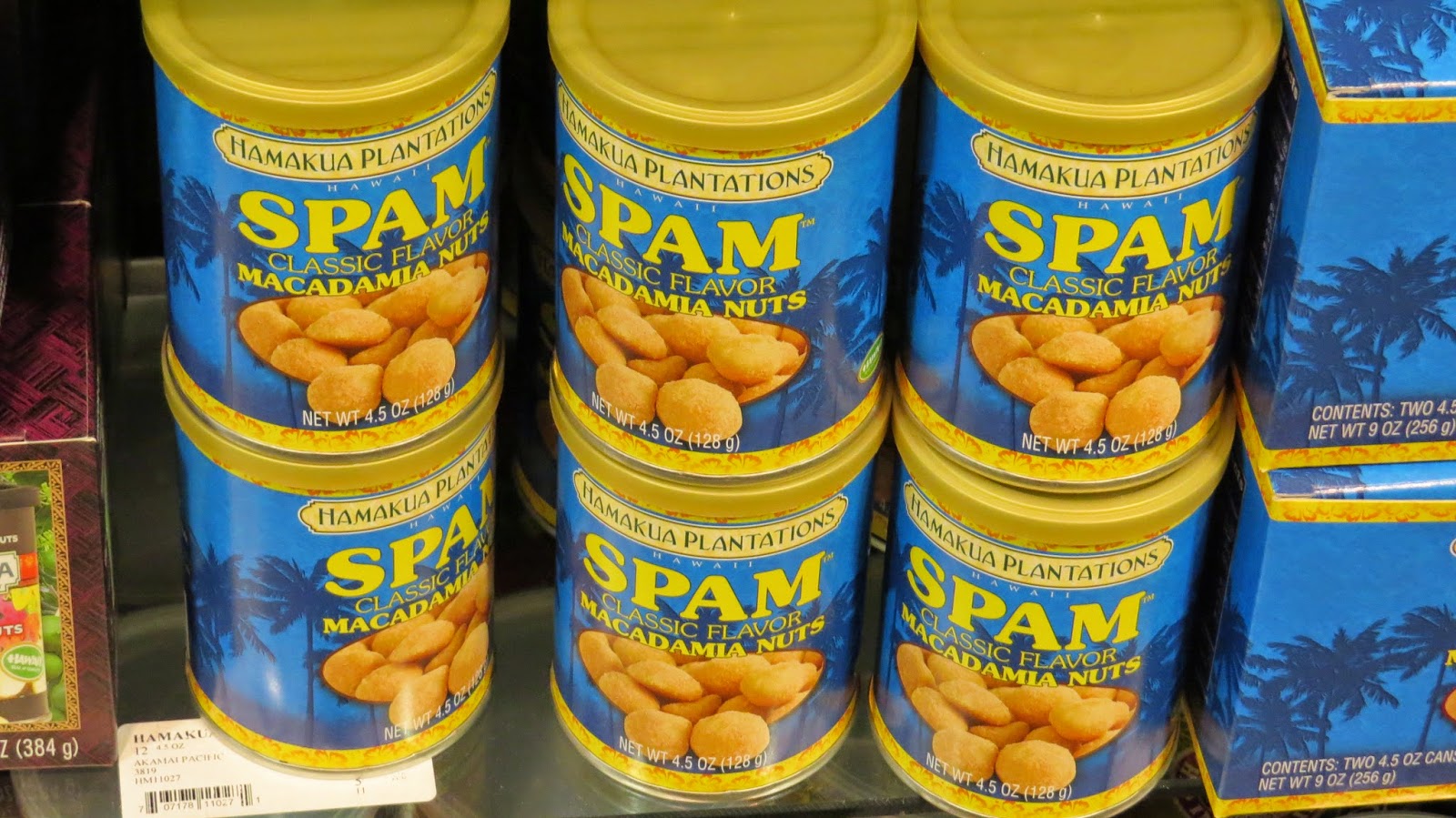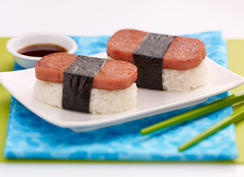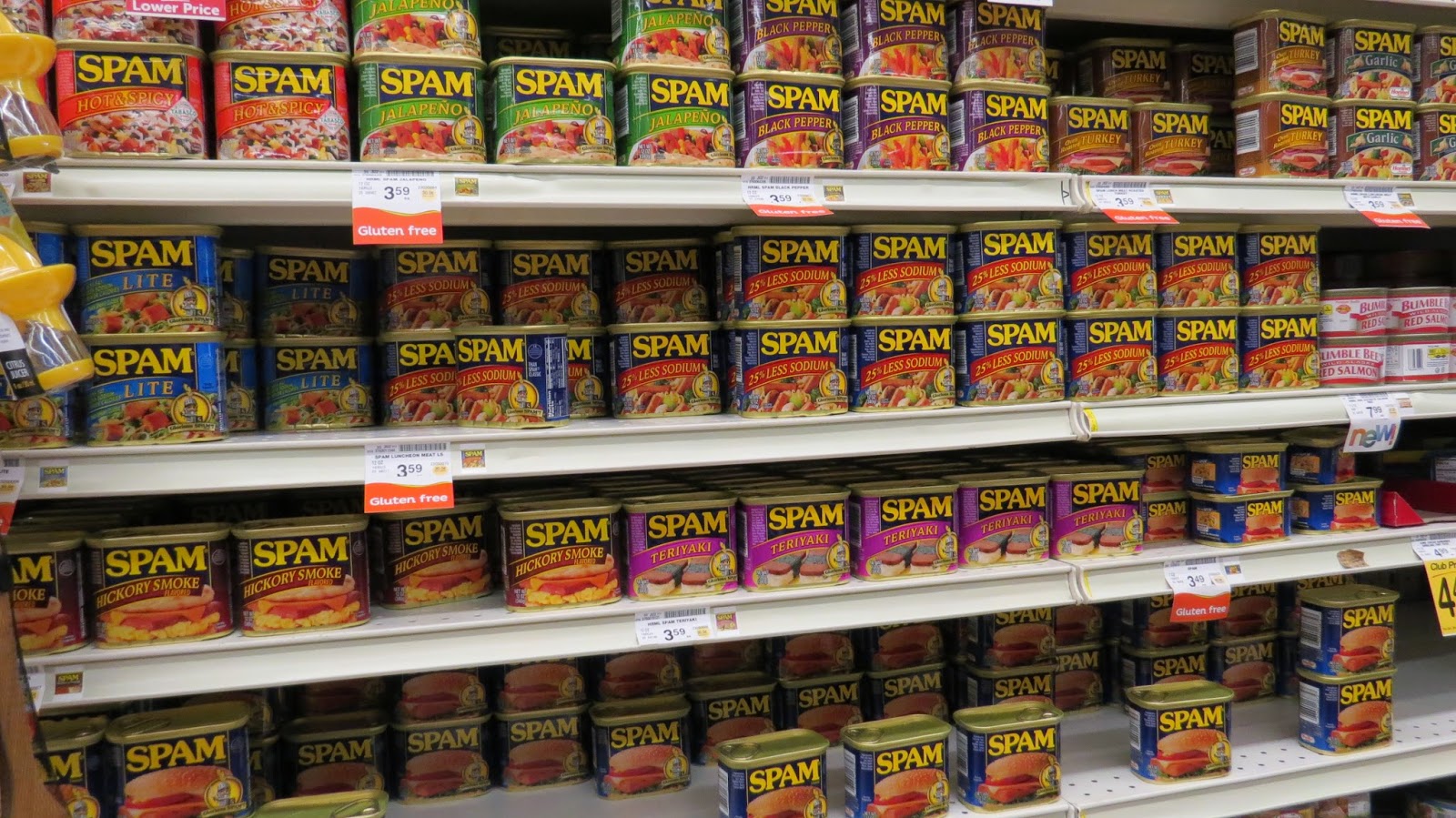 |
| It appeared that all 14 flavors of Spam were offered at the Safeway store in Kihei. The bottom shelf was selling out quickly yesterday in preparation for Thanksgiving, which I believe was the original Spam flavor. |
Recently, we’d found that CBS Sunday Morning most current episode, a favorite TV show of our long-ago past is shown at noon on Sundays on the Smithsonian channel.
Click here for the video about Spam in Hawaii from CBS Sunday Morning
 |
| Spam flavored macadamia nuts we spotted on a visit to Lahaina. |
Most often, we’re outside around noon, but on a few occasions, we’ve made an effort to come back inside to watch the show while I stand in the kitchen, able to see the TV while chopping and dicing for the next meal.
Yesterday, a perfect day, we languished in the swimming pool contemplating going inside to watch the show. After drying off, we returned to our condo 15 minutes after the show had started. Within five minutes after starting to watch the show, the story of Hawaii’s love of Spam started.
We chuckled over our good timing and the fact that this was only the second time we’d managed to catch the show. Also, we giggled over the fact that when we’d shopped at Costco in preparation for Hurricane Ana, we’d purchased eight cans of Spam in a single typical Costco over-sized package and Tom has since eaten all eight cans.
I never took a bite, although oddly, Spam is befitting my way of eating. Had we been stranded for weeks with no food, surely I’d have eaten some. In our cozy, well-equipped life here in Maui, I had no desire. Tom ate it cooked with eggs a few times. For the balance, he sliced it into thin pieces eating it with sliced cheese.
Yesterday, during my last trip to the grocery store in Maui, I wandered over to the Spam aisle taking the above photo. I believe that the 14 varieties mentioned in the video were all represented but so many shoppers were clamoring to grab a can, I wasn’t able to count.
Here’s some of the dialog from Sunday Morning’s story:
“SPAM may come in 14 varieties, but as far as its detractors are concerned, it’s all just Spam. Not so in the place, our Lee Cowan has traveled to, where Spam always gets the warmest of receptions:
There is hardly more maligned meat than Spam. But if you think Spam is just a culinary punch line, you haven’t spent enough time in Hawaii.
Known for their trade winds and rainbows, the Hawaiian Islands are also a Spam-a-alcoholic’s paradise. In fact, no state eats more.

On the island of Kauai, at the Foodland Waipouli that Orlando Dutdut manages, Spam is as plentiful as sunblock.
Man: “Well, what’ve you got?”
Waitress: “Well, there’s egg and bacon; egg sausage and bacon; egg and spam; egg bacon and spam; egg bacon sausage and spam; spam bacon sausage and spam; spam egg spam spam bacon and spam; spam spam spam egg and spam; spam spam spam spam spam spam baked beans spam spam spam spam; or Lobster Thermidor aux Crevettes with a Mornay sauce garnished with truffle pate, brandy and a fried egg on top and spam.”
Wife: “Have you got anything without spam in it?”
Waitress: “Well, there’s spam egg sausage and spam — that’s not got much spam in it!”
- Hormel fights for Spam name (07/30/03)
- Selling Spam with humor (CBS News, -8/21/12)
 |
| On this date one year ago we dined at our favorite Sail’s Restaurant in Diani Beach, Kenya after a bad dinner out the prior night. For details of that story, please click here. |
 |
| Tom, that same night with me at Sail’s Restaurant in Diani Beach, Kenya. |

